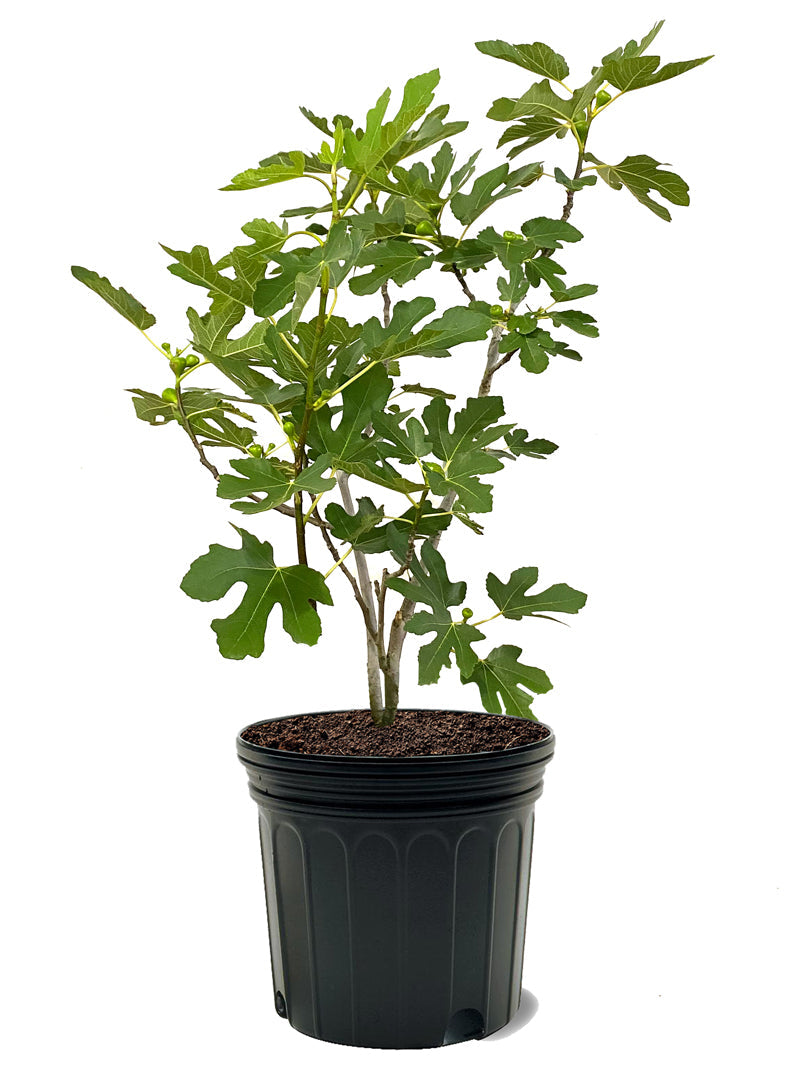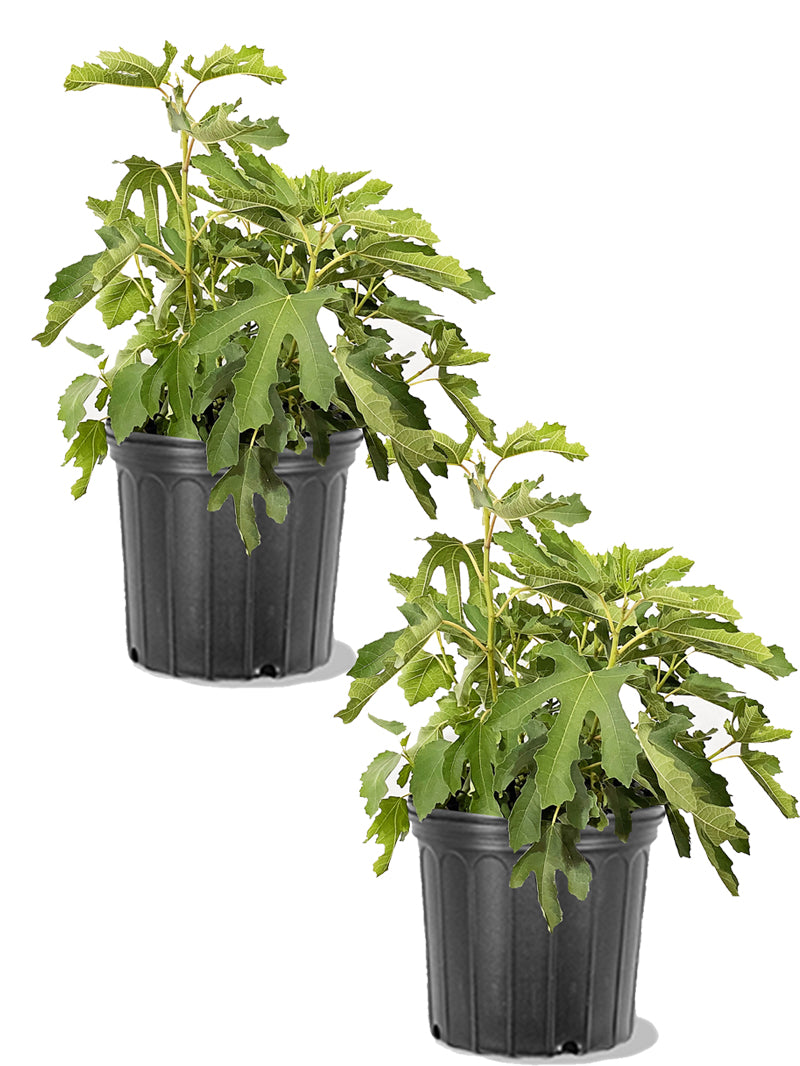Plant Quick Guide
Growing Zones:
Mature Height:
Mature Width:
Sunlight:
Spacing:
Chill Hours:
Growth Rate:
Harvest Time:
Years to Bear:
Pollinator:
Does Not Ship To:
Fig Trees - Olympian
USDA Hardiness Zones: 6-10.
Description
The Olympian Fig is a standout variety prized for its exceptional cold tolerance and uniquely sweet fruit. This heirloom fig is perfect for gardeners in cooler climates, delivering a reliable harvest of large, flavorful figs even in areas with shorter growing seasons. With its compact growth and adaptability, the Olympian Fig is an excellent addition to gardens and containers alike.
Key Features
- Cold-Hardy: Thrives in cooler climates and withstands temperatures as low as 10°F, making it one of the most cold-tolerant fig varieties.
- Exceptional Fruit: Produces large, purple-skinned figs with a delicate, light amber interior that offers a sweet, honey-like flavor. Ideal for fresh eating, baking, or preserving.
- Compact Growth: A naturally smaller size makes this fig tree perfect for smaller yards or container gardening.
- Early Harvest: Offers a reliable crop in early summer, with potential for a second harvest in warmer regions.
- Ornamental Appeal: Large, deeply lobed leaves and attractive fruit add beauty to any garden setting.
Mature Size
- Height: 6–10 feet
- Spread: 4–8 feet
USDA Hardiness Zones
- Zones 6–10 (requires winter protection in Zone 6).
Care Instructions
- Soil Requirements: Prefers well-drained soil with a pH of 6.0–7.5.
- Sunlight: Requires full sun (6–8 hours daily) for optimal growth and fruit production.
- Watering: Water deeply during the growing season, allowing the topsoil to dry slightly between waterings.
- Fertilization: Apply a balanced fertilizer in early spring and again in midsummer for vigorous growth and fruiting.
- Pruning: Prune annually in late winter or early spring to remove dead or weak branches and maintain shape.
- Winter Protection: In cooler zones, mulch around the base and wrap the tree with frost blankets or burlap to protect it during winter. For container-grown figs, move indoors or to a sheltered location.
- Pest & Disease Management: Monitor for common pests like aphids or spider mites. Ensure good airflow to reduce the risk of fungal diseases.
Why Choose Olympian Fig?
The Olympian Fig combines remarkable cold tolerance with outstanding fruit quality, making it a top choice for gardeners in cooler climates. Its compact size, early harvests, and sweet, flavorful figs ensure it will quickly become a cherished addition to your garden or patio. Whether grown in-ground or in containers, this resilient variety will reward you with years of beauty and bountiful harvests.
Shipping

At Plant Me Green we handle, package and ship the products you order with the utmost care. We ship your plants using FedEx Ground® the following business day after you have completed checkout.
We are now offering $15 flat rate shipping for all tree orders! Replacement tree shipping cost will be $15 per box. We still cannot ship to some states and US territories based off the Agricultural Laws that may be in place. Please see below for all exclusions.
If you have any questions concerning transit time for your order, please feel free to contact us at info@plantmegreen.com or toll free 855-817-5268.
Trees: Due to strict Agricultural Laws in place, we currently cannot ship to the following states: Alaska, Arizona, California, Hawaii. We cannot ship to Puerto Rico or international.
How to Plant

STEP 2) Once you've located the perfect spot, the hole you are digging must be at least double the width and as deep as the root system you are planting.
STEP 3) Remove the plant from the pot and place the root ball in the hole. The top of the root system should be level with the ground. Before placing the tree or shrub in the hole, use your hands to gently break up the root system.
STEP 4) Once the plant is in place, backfill the hole with native soil and any leftover potting material.
STEP 5) Pack down the soil to eliminate any air pockets.
STEP 6) When finished, water thoroughly.
Care Guide
















